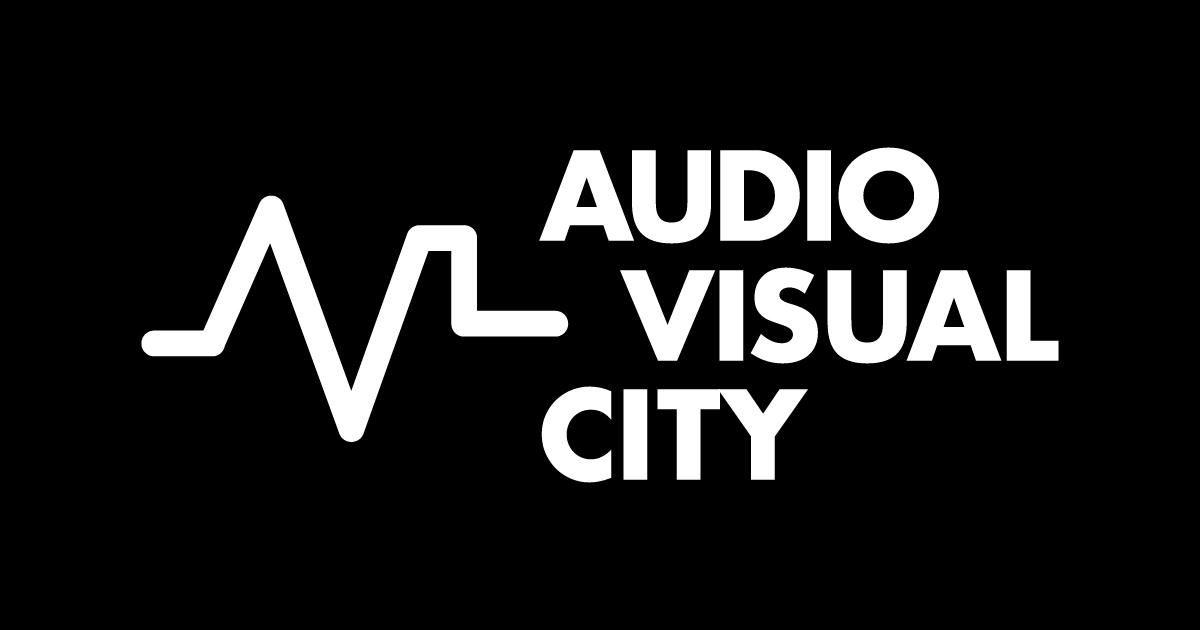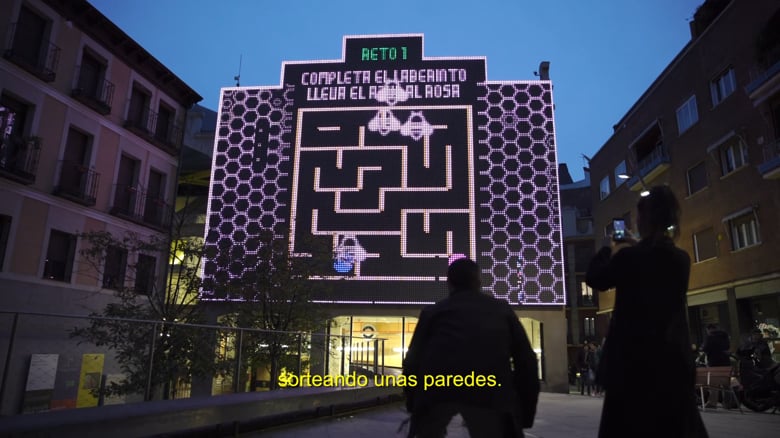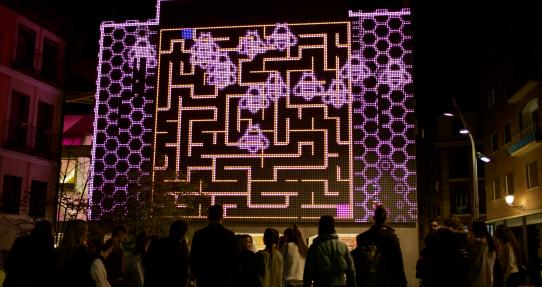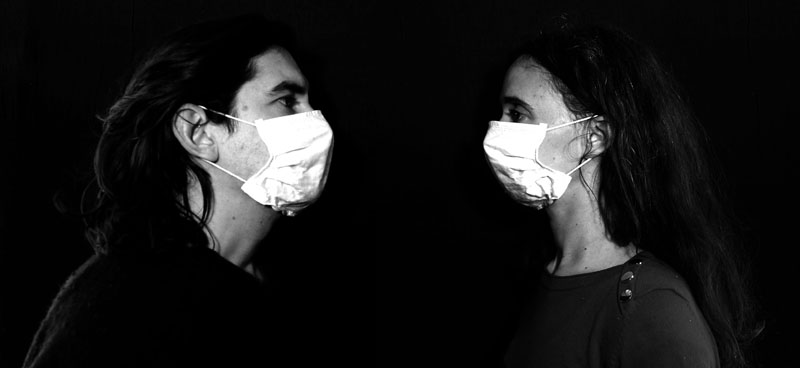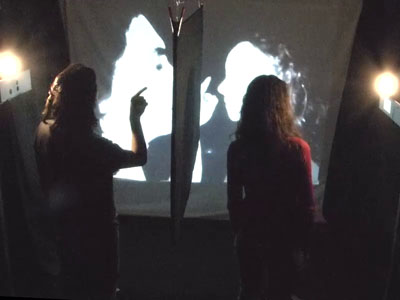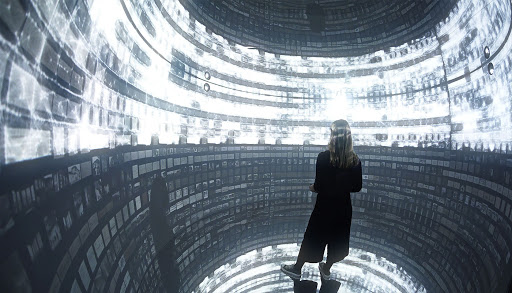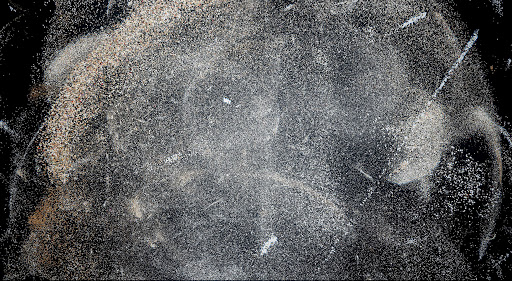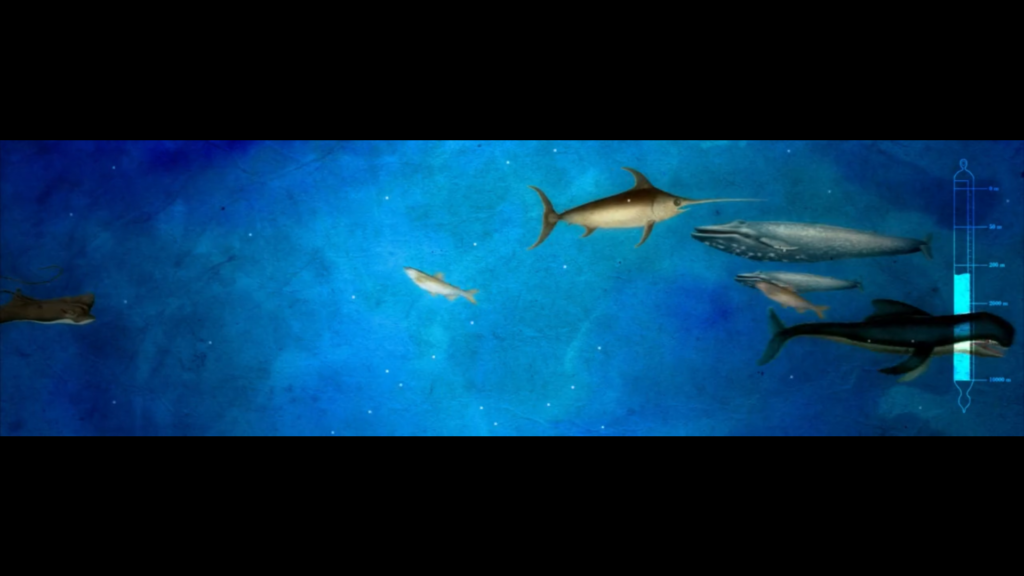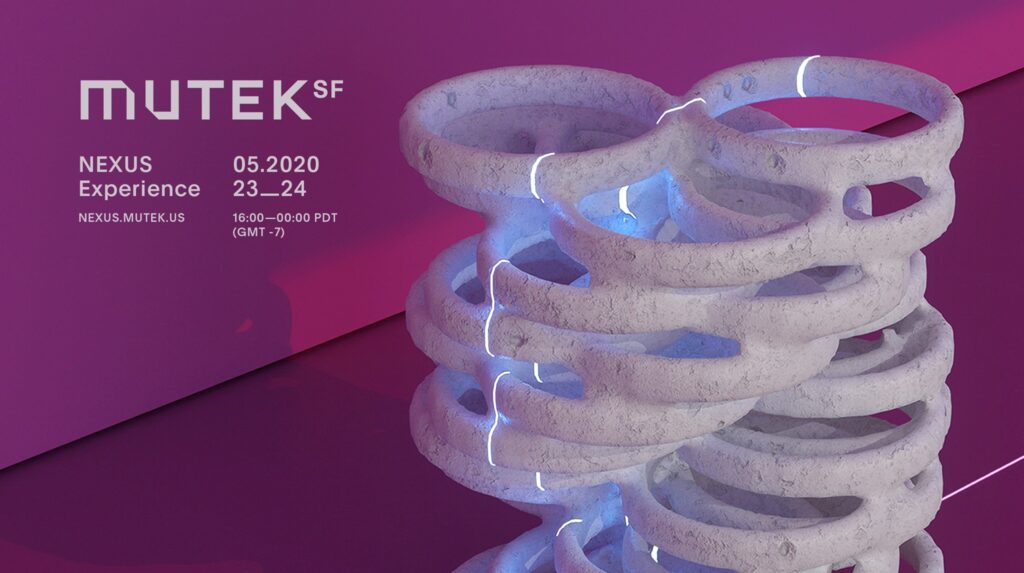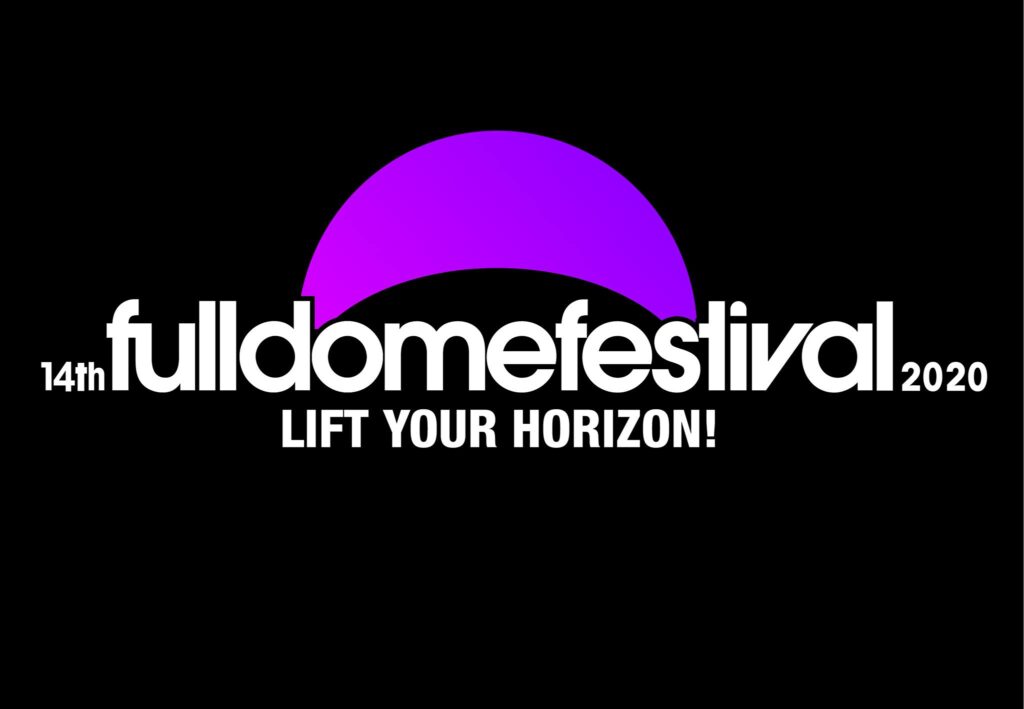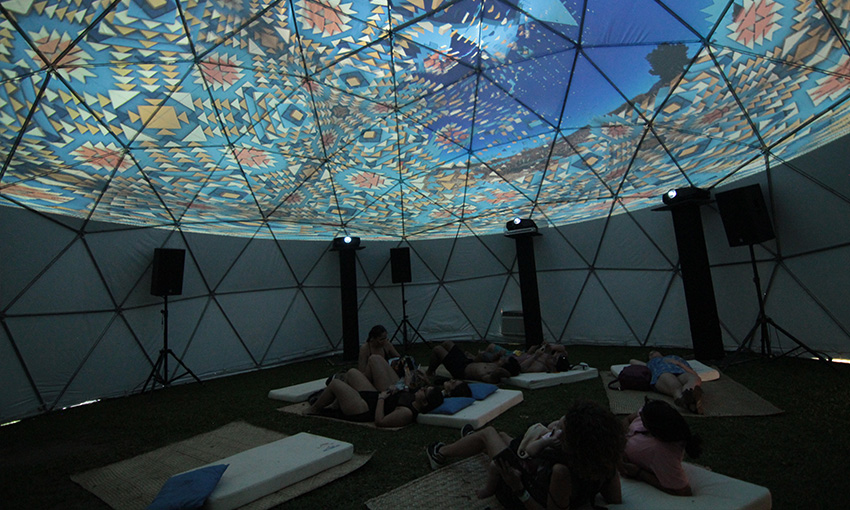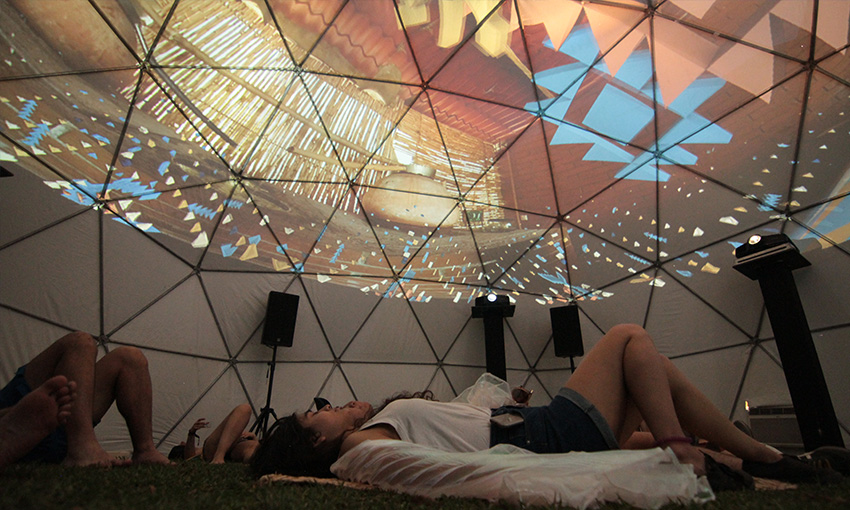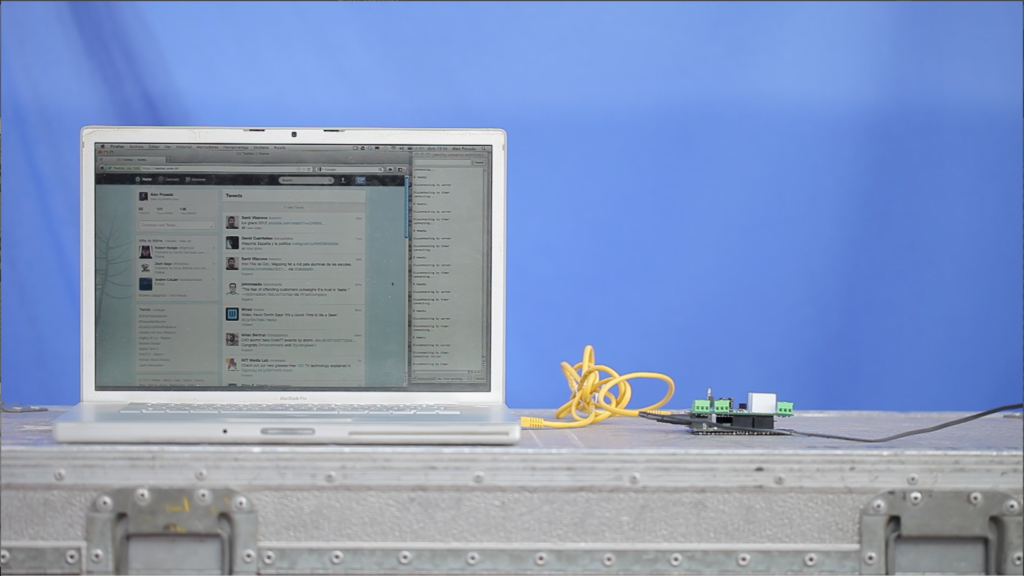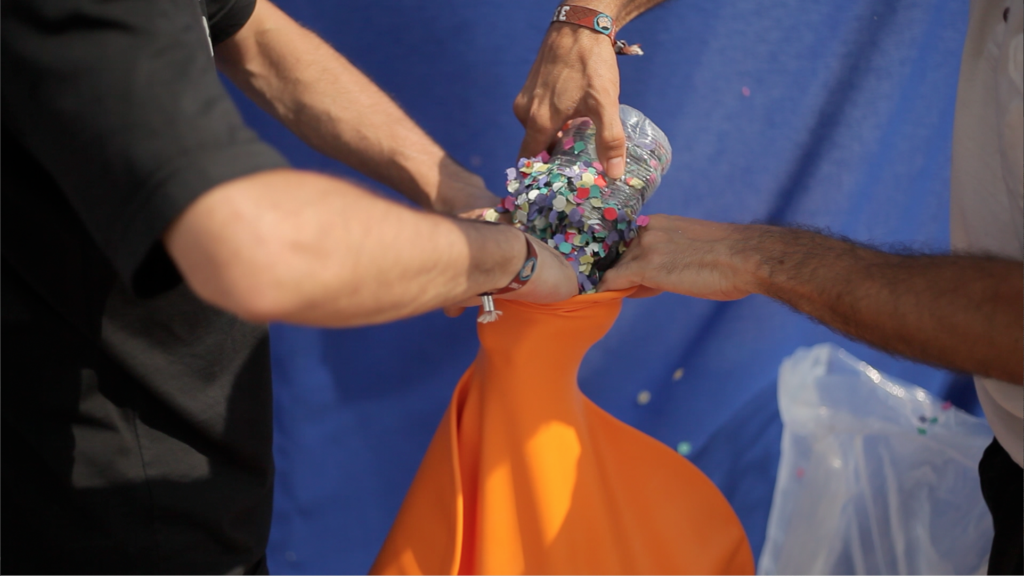How digital arts can unlock value and opportunity in a socially distanced cultural sector?
Marco Savo from Audiovisual City and Kate Rolfe from The Revels Office have never met in person. Theirs is a true digital relationship born of the pandemic.
Cultural consultants who met over Zoom to explore where their world’s crossed-over, and how their mix of experience could help artists, freelancers, and the arts sector as a whole to combat this unsettling time.
Audiovisual City is a digital magazine that promotes and supports audiovisual artists and events worldwide. Connecting hundreds of digital artists from across the world, it is the go-to place for inspiration and information when it comes to the application of digital technologies in artistic expression.
The Revels Office is a cultural consultancy who specialises in finding new revenue for the arts, advising organisations on commercial opportunities and uniting them with funding partners who value the unique, high quality content that only the cultural sector can produce. Together with a network of consultants -The Catalyst Network – the team at The Revels Office manage a range of projects at the intersection between arts and commerce.
Together with a multi-disciplinary group of experts who all have touch-points with digital arts experiences, Audiovisual City and The Revels Office ran a workshop to explore what role digital arts projects could play in the future of arts organisations.
At a time when the sector is anxiously remodelling their core operations to survive months of low visitor numbers, reduced income through established business lines, and a new, uneasy socially distanced experience, we wanted to investigate what untapped value digital arts might offer.
We share with you here a summary of our findings, designed to inspire you at a critical time, to offer valuable ideas to consider in your re-modelling plans, and to decipher the role that digital can play in a sector based almost entirely on live and tangible experiences…
Case Study: Enjambre Cellular
Developed by Mónica Rikić, Enjambre Celular is a project created and designed specifically for the Medialab-Prado interactive façade.
It is a collective strategy game in which different levels and challenges must be overcome, based on the idea of a labyrinth. Controlled externally by passers-by, Enjambre Celular offers an example of a pandemic-proof artistic installation.
Case Study: Distances
Developed by Scenocosme, In this installation, two people in two separate physical spaces are filmed in real time by two devices.
They are invited to have contact virtually within the same image, bringing them together face to face. The head-to-head image created by the software is trying to constantly reduce the proxemic distance between the two people, creating unique and ephemeral meetings with the other and making a connection even when physically apart.
Digital art vs digital design.
To make informed choices about the use of digital, it is important to understand the distinction of digital art as an artform in its own right, and digital design as a tool for engagement.
Put simply – do you need to move your live content online for commercial, audience or safety reasons, or do you want to create a new interpretation of your content that will explore your stories in an entirely new way? Neither choice is right or wrong, but it will impact the outcomes you achieve, as well as the process you go through.
“The importance of concept is key; you must start with your concept and then chose the technology to match”
Hayley Cantor
What digital art and digital design have in common is their ability to bridge between traditional cultural content and modern, digitally aware audiences, and allow people to fully interact with the arts.
No solution is quicker for overcoming an image of being elitist, static or uninteresting than a digital initiative, so long as it is done well, has a clear purpose and audience, and so long as it incorporates some kind of live and/or unique element that ensures the digital is not simply a mimic of the live experience.
While digital design is fantastic for bringing to life educational and historic content, and is arguably simpler for translating to an online platform, where digital arts stands out is in the sensorial, emotive experience that they can create, lasting longer in people’s memories and creating a sense of community and harmony even if you encounter the art alone.
Digital arts is the perfect solution for a hybrid cultural offering, connecting those experiencing it online and those there in person, allowing for smaller, safer groups to pass through it without losing the commercial, social and artistic benefits of scale.
Case Study: Virtual Archive.
Virtual Archive is a 3D, computer-generated environment open to interactive exploration by single users.
Via a VR headset, the user flies through a 3D data-point cloud formed, visualizing more than 1,700,000 documents present in SALT Research archive collections. Refik Anadol’s installation was displayed as an extension to the artist’s Archive Dreaming project.
Case Study: Natural History Museum of Valparaisa.
In the Introductory Room at Natural History Museum of Valparaíso, Chile, visitors meet an installation of naturalistic illustrations of flora and fauna of the region, highlighting the work of Claudio Gay among others.
Developed by Delight Lab, this project was realised in partnership with the SUMO design and museum office for DIBAM.
It’s time to set the price.
The price we have paid for the vast amounts of thrilling, comforting and informative digital content that has been dispersed throughout the global lock-down, is the expectation that digital means free.
Digital comes with development costs, artist costs and new software and/or infrastructure requirements, among other operational demands. Digital content is by no means free to create, and so why is it presented as free to consume? There are two ways of looking at this dilemma.
• Option 1 is to embrace the non-financial value that going digital presents: reaching new and much larger audiences, collecting insightful data, offering educational and social benefits, and adopting new methods in storytelling and human connection.
In this way there is still value, there are no barriers to audiences engaging with you, and you can use data and reach to collaborate with new funding partners, upsell products and services, and request donations wherever possible.
In this way we have seen a really positive response during the pandemic, with culture-lovers willingly paying for online experiences, seeing this as a charitable donation to save something they love rather than a charge for valuable entertainment. However this has not yet translated into a consistent approach that audiences and funders recognise, or indeed made up the huge gap in revenue that arts organisations face.
• Option 2 is to revaluate and recommunicate the value of the digital experience, and set up platforms that give organisations the option to charge.
Given the high value outlined by option 1, it seems reasonable that – just like the expectation to pay for the cinema or a gig – you will have to pay to participate in digital cultural experiences. This transactional view may not sit well alongside arts experiences that are traditionally free, such as museum-entry, but this demonstrates the opportunity presented by digital arts as opposed to digital design; by creating a new experience on a new platform, arts organisations can create something of value to their audiences (and new ones), one which better warrants a participation charge.
Ultimately this is an argument of supply and demand, but what we endorse is a collective reassessment of how and when to charge for digital experiences, thereby protecting arts organisations and artists from giving away valuable content for free, especially when for a time this might be one of their only viable sources of revenue.
Case Study: Fulldome Festival
The oldest full dome projection festival has been held virtually for the first time this year due to the pandemic, charging a ticket price for the online experience. A courageous decision from the organisers who decided to go full steam ahead, offering a 360 view of the festival using VR headsets.
Case Study: Mutek San Francisco, Nexus Experience
Mutek is one of the top audiovisual events worldwide, born in Montreal and then expanded through an international network. The San Francisco edition has been online this year with their ‘Nexus Experience’, hosting live AV performers on two stages, offering digital galleries, online workshops, and ‘viewing party’ film screenings. The event was free and open to donations, with 100% of the festival proceeds going directly to the artists.
Demystifying the digital process (and budget).
Digital arts experiences are impactful and memorable no matter what their size, from single exhibition displays through to city-wide festivals. While they can be huge and expensive, often a digital intervention is as cost-effective as a live experience due to the flexibility of the format, recouping investment costs over a far longer lifespan.
For those who want to consider digital as part of their future plans, digital arts producer Steph Clarke shares some considerations:
• Once a digital installation, artwork or exhibition is installed, it can often run 24/7 with minimal staffing and low running costs. Not only can this make valuable budget savings, it also accommodates far higher audience numbers over time, and can easily be adapted to allow for social distancing measures.
• Digital works can easily have their content re-purposed to suit different objectives. Content can be refreshed regularly to suit seasonality, adapted for VIP or stakeholder events, and used for advertising purposes if required.
• It is relatively easy to scale digital work depending upon size of venue or audience size, meaning this approach can be considered for a variety of projects, places and budgets.
• Digital can be used to extend and enhance audience engagement before and after the event/exhibition itself, through engagement online and via apps, creating more touchpoints with your intended audience and opportunities to capture insights and data.
• By digitalising the content for a digital installation, you are simultaneously archiving it too, preserving it for future generations and achieving important cost-savings.
• Given the huge range of digital formats available – apps, projection, light shows, VR, AR – there will always be a format suitable for your budget, timescale and objectives.
Case Study: 400 Conejos.
As part of the Bahidora 2018 festival, Medusa Lab created a unique experience for Ache Producciones and its client: Mezcal 400 conejos.
Attendees received a complimentary drink of mezcal prior entering the dome, and once inside they discovered the mezcal making process through an immersive, colour-filled experience using animations and 360 video.
Case Study: Pinata Tweet.
Piñata was a project made by MID for +Castro agency and the SAKE production company. The piñatas were installed as part of a collaboration with Trident Senses at Benicàssim International Festival.
The interactive piñatas are controlled via Twitter messages sent by the audience. Every tweet contained #TridentSensesPinata, which activated a device that inflated the piñata. As messages accumulated, eventually the piñata exploded over the audience!
Audiovisual City and The Revels Office plan to now work together.
We aim to connect arts organisations with digital artists and commercial partners, creating inspirational and viable projects in a time of pandemic.
Together we will champion the skills, value and authenticity that digital art and digital tools can bring those looking to find new audiences and new revenue. Get in touch to discuss how these ideas could be applied to your own organisation – hello@therevelsoffice.co.uk
This article was written by Kate Rolfe from The Revels Office and Marco Savo from Audiovisual City with contributions from Hayley Cantor (Audiovisual City Creative Director, Multidisciplinary Graphic Designer and VJ), Sean Carroll (Business Improvement Project Manager), Nicola Casperson (Brand Marketing, Events and Place-Making Consultant), Steph Clarke (Digital Arts Producer), Marta Minguell Colomé (New Media Artist, VJ and Photographer), Amy O’Brien (Events Producer), and Mónica Rikic (New Media Artist). Collectively our experience includes roles at the National Gallery, Natural History Museum, Secret Cinema, Battersea Power Station, Westfields, and London’s Philharmonia Orchestra.

